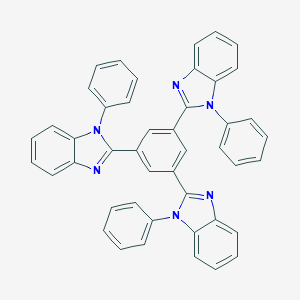Progress has been made in the study of narrow-spectrum antibacterials
-
Last Update: 2021-01-04
-
Source: Internet
-
Author: User
Search more information of high quality chemicals, good prices and reliable suppliers, visit
www.echemi.com
the emergence and spread of bacterial resistance pose a serious threat to global public health security. Addressing this challenge requires the development of new antimicrobials and antimicrobial therapies. Narrow-spectrum antimicrobials/therapies specifically identify and remove target bacteria, reducing off-target interference with host symbiotic virlotas and reducing the evolutionary pressure on bacteria resistance. However, the development of narrow-spectrum antimicrobials/therapies has been extremely sluggish due to the inherent difficulty of distinguishing germs from probiotics and the lack of investment enthusiasm of pharmaceutical companies in narrow-spectrum antimicrobials (which, for cost-benefit balance, they naturally wish to develop an antibacterial that can kill all bacteria). In response to this problem, Associate Professor Yang Lihua of the University of Science and Technology of China proposed to give existing broad-spectrum antimicrobials/therapies the ability to identify target bacteria, thus transforming them into a narrow-spectrum antimicrobials/therapies.
photodynamic therapy uses photodynamics to respond to reactive oxygen (ROS) produced in place in lighting to remove target cells. However, Cheng also Xiao He, defeat also Xiao He. On the one hand, because reactive oxygen can destroy a variety of cellular substances essential to the normal function of cells at the same time, photodynamic therapy can remove drug-resistant bacteria and at the same time delay the bacteria to obtain resistance;
Recently, Yang Lihua's team found for the first time that when the surface of negatively charged nanoballs mixed with bacteria, nanocrules selectively adsorbed to the surface of coli rather than to the surface of Bacillus, and this recognition mechanism based on bacterial profiling selection is driven by entropy increase, and is generally used in a variety of nanocrules with different compositions and surface chemistry. Based on this physical identification mechanism and the extremely limited effective activity radius (less than 200 nanometers) of reactive oxygen, the researchers speculate that if nanospheres have photodynamic effects, they may be able to efficiently remove coli in light without interfering with Bacillus. This hypothesis is confirmed by antibacterial experiments using different photodynamic nanoballs and a variety of bacteria. The findings were published recently in Physical Chemistry Express.
This work not only reveals for the first time the crucial role of bacterial appearance in similar charge nanocules/bacterial interactions, but also promises to provide a new treatment for diseases such as allergic dermatitis caused by overbreeding in the microenvironment of coli-dominated healthy symbiotic bacterios.
relevant paper information:
This article is an English version of an article which is originally in the Chinese language on echemi.com and is provided for information purposes only.
This website makes no representation or warranty of any kind, either expressed or implied, as to the accuracy, completeness ownership or reliability of
the article or any translations thereof. If you have any concerns or complaints relating to the article, please send an email, providing a detailed
description of the concern or complaint, to
service@echemi.com. A staff member will contact you within 5 working days. Once verified, infringing content
will be removed immediately.







